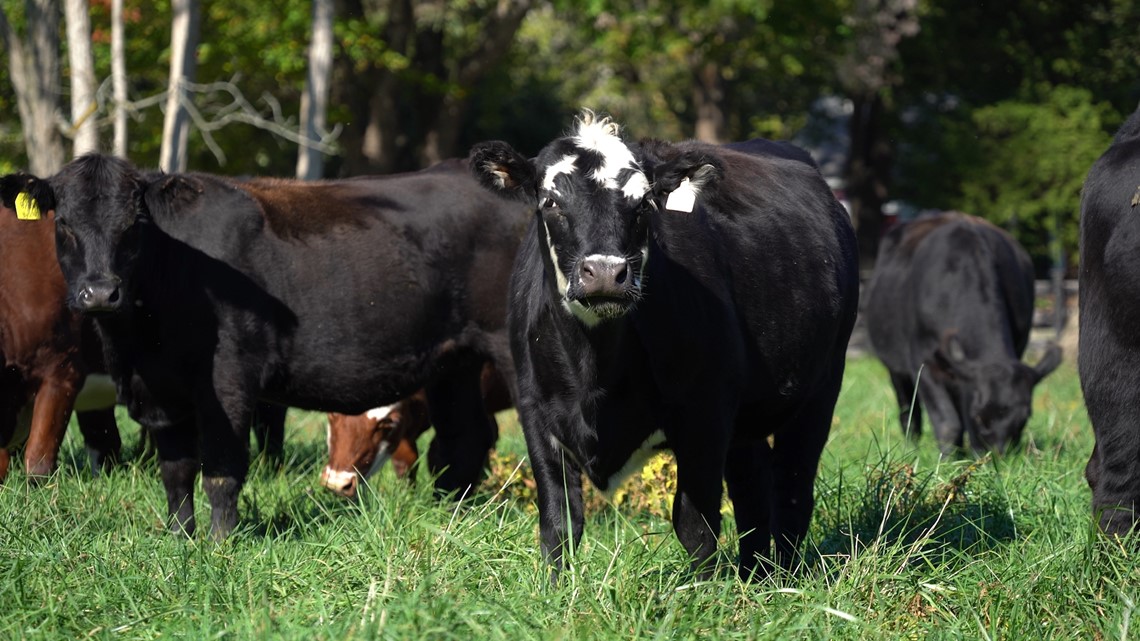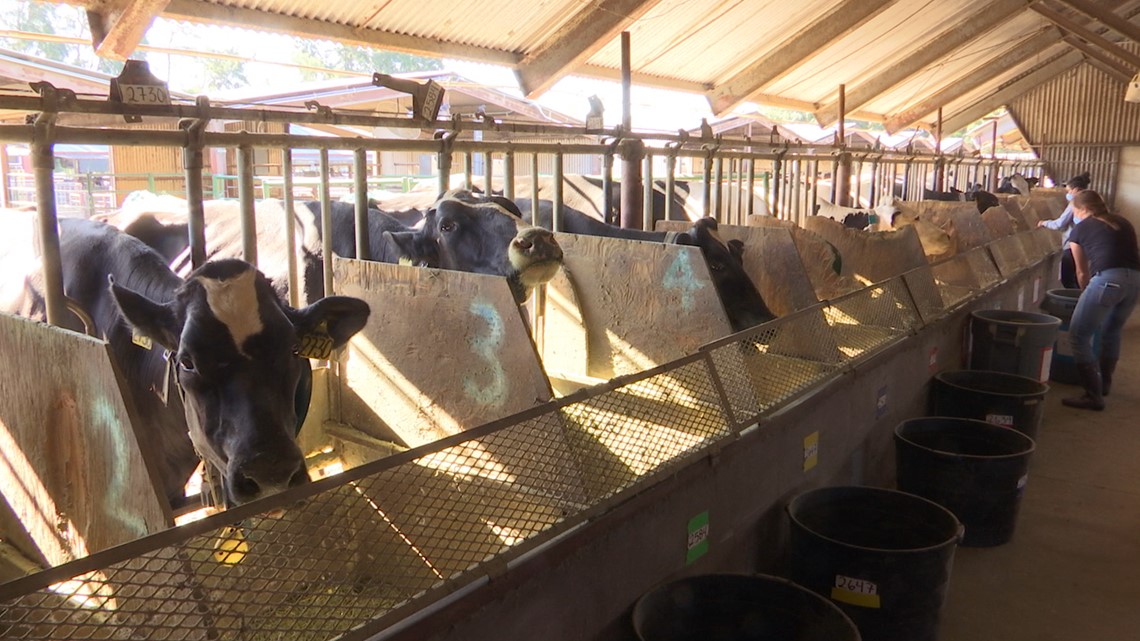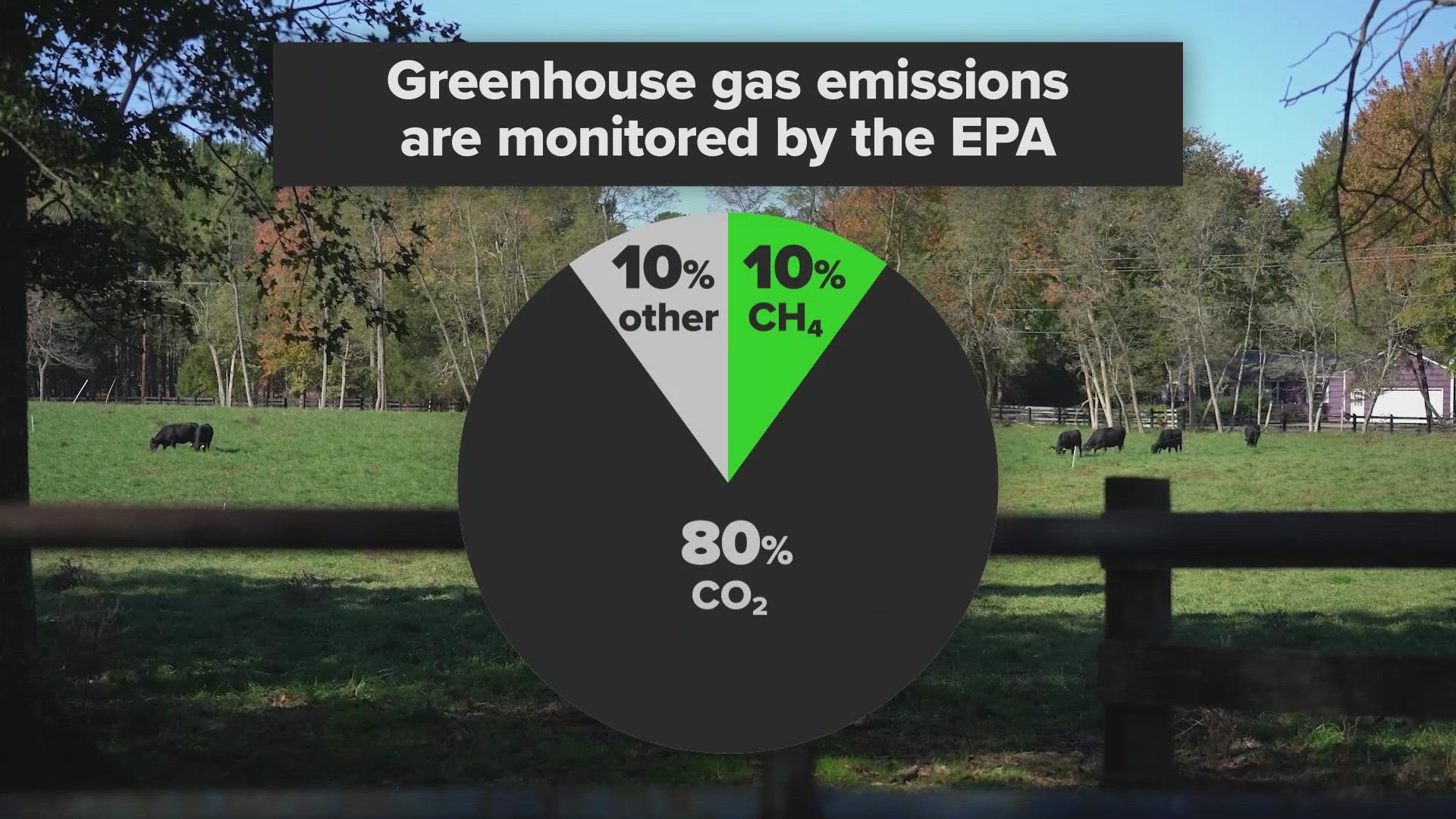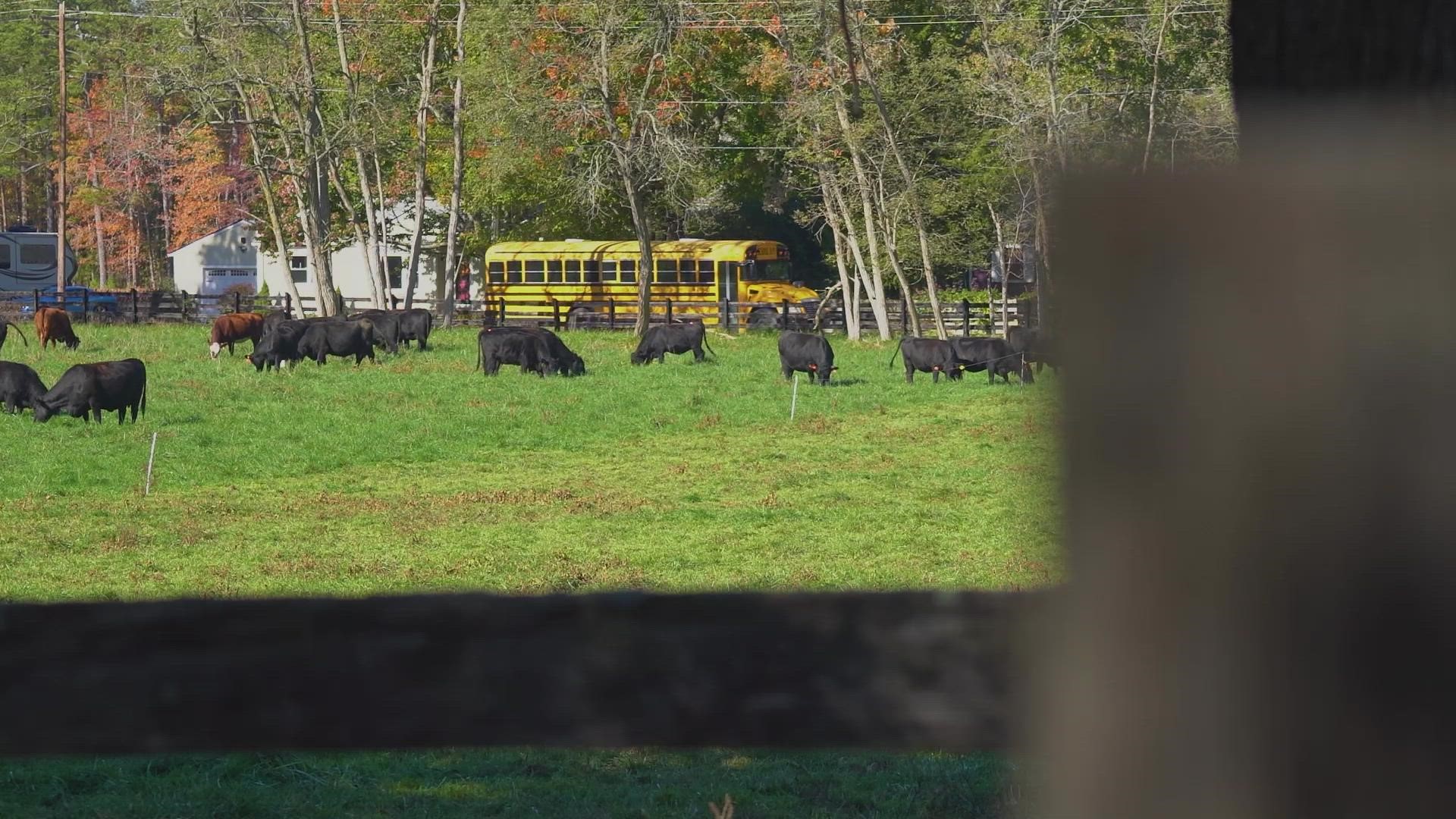Climate scientists say greenhouse gas emissions need to be dramatically reduced in order to prevent catastrophic global warming. At the 2021 United Nations Climate Change Conference in Glasgow, Scotland, over 100 countries including the United States agreed to reduce methane emissions by 30% by 2030.
Cattle are a big part of the standard diet in the United States, and over the past 100 years, Americans have been eating an average of 56 pounds of beef per year, according to the U.S. Department of Agriculture (USDA). A Global Methane Assessment published in 2021 claims methane emissions from livestock, which includes cattle, are the largest source of agricultural emissions worldwide. Researchers say cows are the dominant animal causing those emissions because of the unique way they produce methane — through burping and pooping.
VERIFY looked into whether cattle are a significant contributor of methane emissions in the U.S.
THE QUESTION
Are cattle the top source of methane emissions in the U.S.?
THE SOURCES
- U.S. Environmental Protection Agency (EPA)
- U.S. Department of Agriculture (USDA)
- Global Methane Assessment, Climate and Clean Air Coalition (CCAC) and United Nations Environment Programme (UNEP)
- Myriah Johnson, senior director of beef sustainability research at the National Cattlemen's Beef Association
- Ermias Kebreab, associate dean at the University of California, Davis College of Agricultural and Environmental Sciences, and director of the World Food Center
- Robin White, associate professor of animal production systems in the Department of Animal Poultry Sciences at Virginia Tech
THE ANSWER
Yes, cattle are the top source of methane emissions in the U.S.
WHAT WE FOUND
VERIFY analyzed data from the EPA to find out exactly how much methane cattle emit in the U.S. Sit back for a minute because we’re about to get into some math.
In the United States, greenhouse gas emissions are monitored by the U.S. Environmental Protection Agency (EPA). In 2019, the U.S. emitted 6.6 billion metric tons of greenhouse gases, and data show methane accounted for 10.1% of those emissions. While it is the second most prevalent greenhouse gas behind carbon dioxide (CO2), over a 20-year period, methane is 80 times more potent at warming the Earth than CO2, the United Nations Environment Programme (UNEP) says on its website.
Methane is produced as part of a normal digestive process in animals, but since cattle, and other animals like sheep, goats and buffalo, have stomachs with four compartments instead of one, they produce more methane as a byproduct of their digestive process. During this process, which is called enteric fermentation, cows either exhale or burp out methane. In addition to their burps, the EPA says the treatment, storage and transportation of cattle’s manure can produce methane, along with nitrous oxide, emissions during the manure management process.
Livestock accounts for 37% of all U.S. methane emissions, and cattle are responsible for much of that, producing 86.2% of that methane. About two-thirds of cow emissions come from burps, while the remaining one-third is from manure management.
When we account for methane from cow burps and cow manure, cows account for 31.5% of all methane emissions in the U.S., which makes them the number one source of methane emissions in the country. Other sources of methane emissions include natural gas production at 23.9%, landfills at 17.4% and wastewater at 2.8%, according to EPA data.
Would removing livestock reduce methane emissions?
To reach climate change goals in the U.S., animal and environmental researchers are looking for unique ways to reduce cows’ methane emissions.
In 2017, Robin White, an associate professor of animal production systems in the Department of Animal Poultry Sciences at Virginia Tech, co-authored a study that looked at the impact of removing livestock from U.S. agriculture.
Data from the study showed greenhouse gas emissions, which include methane, only dropped by about 2.6% when all livestock were eliminated.
“The base expectation is that if we got rid of them, you would basically automatically recoup that greenhouse gas emissions expense, and what we find is that's not really supported by the simulation that we did,” said White.
White says the remaining emissions are associated with the land used to produce feed for the animals.
“You could probably argue that you could retire that land — you could take it out of production entirely,” said White. “But the thing is, agricultural land is in agriculture because it's making somebody's livelihood.”


How researchers are working to reduce cows' methane emissions
Since eliminating all cattle from the U.S. food chain isn’t realistic, researchers are instead getting to the stomach of the issue, literally.
Ermias Kebreab, the associate dean for global engagement at the University of California, Davis, College of Agricultural and Environmental Sciences, studies the impact of agriculture on greenhouse gas emissions. By changing what cows eat, Kebreab and other researchers at UC Davis have found emissions can be dramatically reduced, and the most promising research comes from an unlikely source — the sea.
“We’re using different feed additives. Seaweed, for example, which we've been working on here. We saw a reduction of up to 80% of the emissions that the animals are burping out,” Kebreab told VERIFY.


He warns the active ingredient in seaweed that is responsible for reducing methane emissions in cattle is bromoform, which isn’t potent enough to be considered a greenhouse gas but does have global warming potential.
“It might have an effect on the ozone layer, so we have to make sure that this chloroform is not released into the atmosphere,” said Kebreab.
Outside of seaweed, Kebreab says the researchers at UC Davis are also using other feed additives for cows, like Bovaer and 3-NOP, which he says reduces emissions by about 40%. Kebreab also mentioned UC Davis researchers are using the natural feed supplement Mootral, which is based on a combination of garlic and citrus extract. He says it reduces emissions by around 20%.
There are two other strategies being leveraged by the cattle industry to reduce methane emissions: better animal management and genetic selection for cattle that naturally produce less methane.
According to the National Cattlemen's Beef Association, genetic selection and better animal management have allowed the industry to reduce herd size from 140 million cattle in the U.S. to 90 million during the last 50 years. Their data show that change reduced cattle methane emissions in the U.S. by 40%, while also increasing beef production.
The big picture
When looking at total greenhouse gas emissions in the U.S. across all industries and sources, methane from cows represents 3.2% of all emissions. The EPA says the transportation sector generates the largest share of greenhouse gas emissions at 29%, electricity production follows closely behind at 25% and greenhouse gas emissions from the industry sector, which primarily come from burning fossil fuels for energy, represents 23% of all emissions.
Dr. Robert Howarth, a well-known researcher at Cornell University, says methane emissions from natural gas are much higher than the EPA data indicates. His data suggests that methane emissions from cattle are less than those from natural gas. Nevertheless, according to EPA data, cattle are the largest source of methane emissions in the U.S., and reducing that output will help the country meet its climate change goals.
Correction: A previous version of this story incorrectly labeled "chloroform" as the active ingredient in seaweed that is responsible for reducing methane emissions in cattle. The story has been updated to acknowledge Ermias Kebreab said "bromoform" is the active ingredient.
More from VERIFY: Yes, climate change could impact the production of beer



